Subscriber Benefit
As a subscriber you can listen to articles at work, in the car, or while you work out. Subscribe Now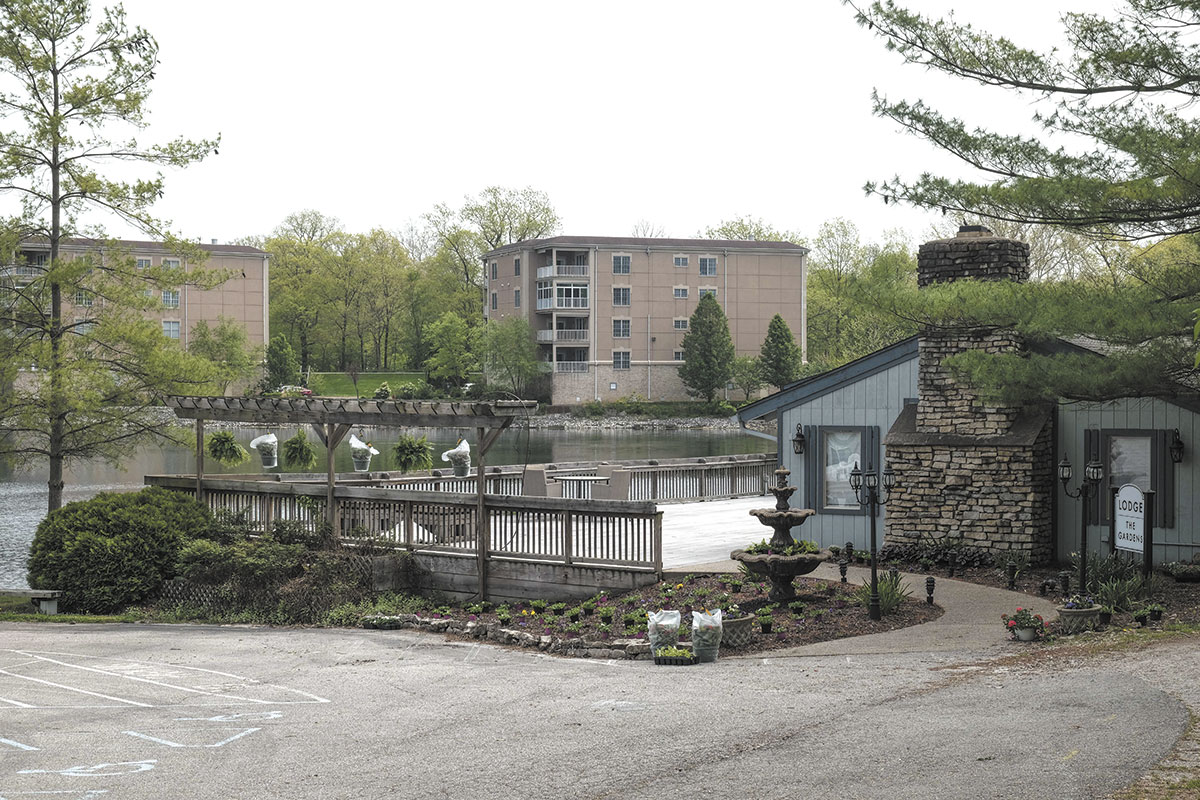
Jack Bayt and Antonia Zunarelli don’t like being in the spotlight.
But that’s where the siblings have found themselves over the past several months, amid a contentious battle with some of the city’s movers and shakers over the future of the land beneath The Willows Event Center, which their family has owned and operated for 30 years.
The siblings want to redevelop the site—about eight acres, not including the adjacent, man-made Spirit Lake—into more than 250 apartments and town houses, through a $61 million partnership with Carmel firm J.C. Hart Co. and Indianapolis-based Chase Development.
Through their company Evergreen LLC, the siblings are asking the city to rezone the property—which is along Westfield Boulevard just north of Broad Ripple—to a designation that allows high-density residential development. But nearby residents have generally opposed the proposal.
Hundreds of neighbors have vocalized their objections since the development was announced in September, arguing that the plans are too dense for the area, would divert taxes from schools and could exacerbate traffic problems along a stretch of Westfield Boulevard that already suffers from poor visibility.
“I’ve had a lot of sleepless nights, I can tell you that,” Bayt told IBJ. “Our business is hospitality—we like to make people happy. So, for us, this is gut-wrenching. Quite honestly, I never dreamed that we would get the pushback [we have] for what we felt was a fantastic product.”
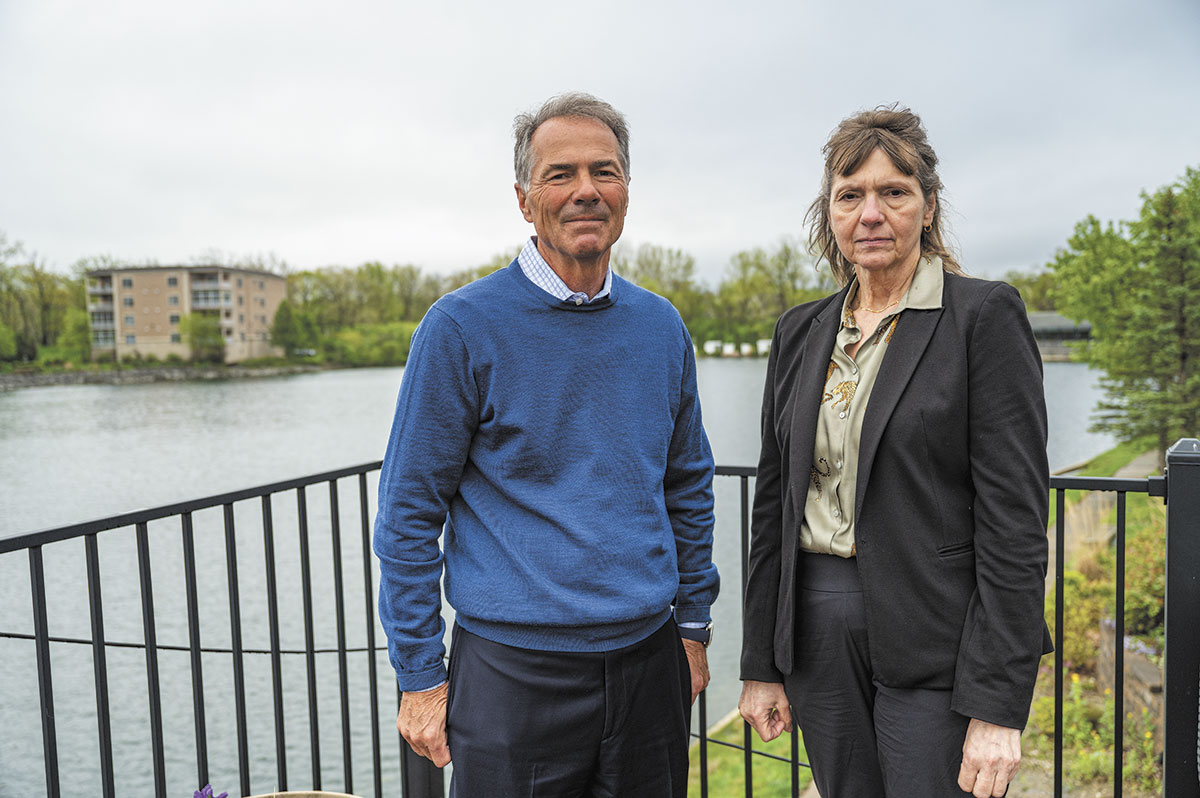
This week, the staff of the Department of Metropolitan Development said it would recommend rezoning for the project be approved, despite the opposition.
The proposed development would be on a site along the western and southern banks of Spirit Lake, a 13-acre pond incorporated into the Willows property as an amenity for the event center when it was built in the 1980s.
The $53 million apartment component, to be developed by J.C. Hart, would consist of three buildings totaling 238 units and 303 parking spaces along Westfield Boulevard, just north of an oxbow—or U-shape—in the White River. Apartments would range from $1,200 to $2,100 per month.
At least 23 apartments would be designated for those making up to 50% of the area’s median income. That’s part of an effort to secure tax-increment-financing bonds from the city, which requires an affordable housing element when a multifamily project is seeking public dollars.
Chase Development would spend at least $8 million to build the town houses, which would range from three to four stories, have two-car garages and cost $700,000 to $1 million. Those homes would front North Dawson Lake Drive, along the southern edge of the pond.
The Bayt family plans to contribute the land to the development, as well as some cash, with plans to remain a long-term partner and to continue taking care of the pond and a green space that would be created by the development.
To date, the city has received nearly 120 letters from residents in neighborhoods surrounding the site. All but seven of them oppose the development, while three are neutral and four express support.
In addition, a petition opposing the development has garnered at least 475 signatures from residents of the adjacent communities of Westfield, Spirit Lake, Oxbow Estates, Shore Acres and Winston Island Woods, among others. The Nora Northside Community Council has also voted to oppose the project.
Bayt said the family has been discouraged and feels ostracized by the pushback, particularly after planners made extensive changes to the project’s design following early discussions with neighbors and DMD staff.
Those changes have included modifying the design of the apartments to be three separate buildings, rather than a single structure, as well as changing the entry point for the town houses to one shared with the development’s apartments instead of one shared with Oxbow Estates.
“It’s very tough, because I’m here on the property and now when people walk by me—they still walk through the property and use it—they look at me like, ‘That’s the guy,’” Bayt said. “I hate that. It’s really been emotional for me.”
He added that he doesn’t believe that information about the project put out by neighbors has been entirely accurate.
Added Zunarelli: “People should know the facts and allow the city to do its job.”
New opposition group
The Marott Island Community Association—a recently formed group representing neighbors of the proposed development—has largely led the opposition charge, joined by the respective homeowners’ associations for the communities of Winston Island Woods, Oxbow Estates and Spirit Lake condominiums.
The association is named after what has been an informal designation for the area and refers to a sort of island created by a split in the White River that starts across from Ravenswood Overland Park, which sits on the east bank of the river.
South of the split, the main channel of the river flows due south to Broad Ripple Avenue, before looping back north and then west. The much smaller branch flows first west, then south, through Marott Park; it rejoins the main channel of the river at the Indianapolis Arts Center. Neighbors have designated the land inside the split Marott Island.
In the south part of the main channel’s U-shape sits Oxbow Estates, a neighborhood of upscale homes that surround Oxbow Lake and generally sell for $800,000 to $1.4 million. Just north of Oxbow Lake are the Spirit Lake condominiums on the east side of Spirit Lake and The Willows Event Center (where the proposed development would be located) on the west side. Winston Island Woods condominiums are just west of Spirit Lake.
Several apartment complexes are nearby.
The Marott Island Community Association—which calls itself MICA—circulated the petition opposing the Willows development and has overseen messaging for materials about the development. In fact, most residents who sent letters to the city referenced one or more of the concerns MICA noted on its Save the Island website.
Lindsay Scott, vice president of MICA, said the group has disbursed no misinformation. She said the goal is to reflect how neighbors feel about the project.
“I think anything that goes there really has to have some strict scrutiny when you’re evaluating [whether] it really fits as part of the neighborhood, but also the overall city plan—beyond the density and the environment questions on Marott Island,” she said.
She said residents generally believe the density of the project far exceeds what city planners have in mind for the area. The property is designated as a suburban neighborhood by the Marion County Comprehensive Plan, which determines the best uses for property depending on proximity to amenities, major roadways and existing neighborhoods.
The classification has an upper threshold of about five units per acre for single-family dwellings, but it also allows for apartment and town house developments, which tend to have much higher densities.
City regulations allow the area of the pond to be taken into consideration when figuring density because it would be considered an amenity to the project.
The Willows development team said the project’s density is just under 12 units per acre, though that figure skyrockets to 31 units per acre when the pond is not taken into account. Remonstrators have pushed back on the idea of including the pond in a density calculation—both because it skews the numbers and because it was already included in calculations for the Spirit Lake condominiums when they were built in 2002.
“The [city’s] comprehensive plan was put into place for many reasons, and I think there’s a lot of things that need to be evaluated before anything goes there,” Scott said, pointing to the unique ecology of the area (it’s designated as an environmentally sensitive area by the city) as well as its proximity to amenities like the Monon Trail and the White River.
High-profile opponents
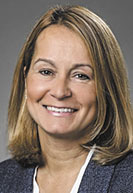

Remonstrators who have written letters to city staff include prominent individuals like outgoing NCAA President Mark Emmert; Capital Improvement Board President Melina Kennedy, a Cummins executive; and Peggy Boehm, wife of former Indiana Supreme Court Justice Theodore Boehm.
Kennedy, who is a resident of Oxbow Estates and a member of the neighborhood’s board, told IBJ her concerns largely relate to the development’s size, as the project is larger than any single development under construction in the Broad Ripple area. She said she would support something with fewer apartments, as J.C. Hart has done with Broad Ripple properties like The Line Urban Lofts and Park 66 Flats.
Other apartment and condo communities in the immediate area have far fewer units. Shore Acres Apartments has 105 homes. Winston Island Woods has 101 condominiums and 1 house. Spirit Lake and Oxbow Estates each have 60.
“I have a lot of respect for Jack and certainly want [the Bayt family] to be able to use this property in a way that is productive for him as the owner as well as the neighborhood,” Kennedy said. “But I think the bottom line is, 255 units is twice what the city’s comprehensive plan calls for. They should have expected this kind of pushback.”
Emmert, a Spirit Lake resident, said in his own letter to the city that, while he recognizes that zoning matters are complex and involve competing interests, neighboring property owners “should have the ability to monetize their personal property” without the risk of losing value due to surrounding development.
He also said he’s concerned about noise pollution, traffic congestion and overcrowding of the neighborhood. Emmert said he is not anti-development and would support a “synergistic development,” if one is possible.
“But in this particular case, the proposed zoning is anything but synergistic,” he said. “Indeed, the proposed development is practically a zero-sum game. The impact it would have on [me] and my neighbors would be enormously detrimental.”
Phil Bayt, an attorney who is not part of the family ownership group but is the brother of Jack and Zunarelli, said the family landed on the size of the development after extensive conversations with city officials and Hart.
“When you do all that math, it comes out that you need this kind of density or similar density in order to get a return on your investment,” he said. “The other thing that drove it was, we couldn’t exceed the number of units that would either be outside of the suggested range within the comprehensive plan or be so many units that it triggered a negative traffic report.
“So, we had a mathematical constraint, we had a zoning constraint, and we had a traffic constraint—when you put all those together, you get the density.”

Recommended approval
The Metropolitan Development Commission is set to consider the rezone request during its May 18 meeting. The DMD, which advises the commission, acknowledged the neighborhood pushback and the fact that the development isn’t aligned with the city’s comprehensive plan.
“The proposal varies from the plan in density, footprint area of the largest building and the location of parking in the front yard,” a DMD staff report said.
However, the report published Thursday said the redevelopment would be near other multifamily projects, including Shore Acres to the north and The Reserve to the south. It is also closer to the recommended use for the land than its current use as an event center.
The report also noted the approval comes following a commitment to include pedestrian infrastructure along Westfield Boulevard, which currently includes very little sidewalk space. Phil Bayt told IBJ the development will include new sidewalks and crosswalks along Westfield Boulevard, as well as a connection to the Monon Trail.
Even if the commission were to break from the staff recommendation and vote against the project, the proposal would remain alive. It still needs affirmation from the City-County Council, no matter the MDC’s decision.
If the commission rejects the project, the council can “call down” the MDC ruling, allowing city officials to meet with remonstrators and the development team in a manner similar to mediation. If no resolution is reached, the council can vote on the measure at its next public meeting. Without a call-down, the council will vote on the MDC decision as part of a larger group of zoning requests.
Congestion problems
One of the few to speak favorably about the project is City-County Councilor Keith Potts, a Democrat representing the council’s District 2.
He told IBJ in early April that he sought to help the development team find middle ground with dissatisfied neighbors. He said that, while that goal was never accomplished, the developers have made as many concessions as possible without sacrificing the project.
“The impression that I get from the neighbors … is, they just don’t want it to happen, period,” he said. “The folks who own the property have the right to petition to redevelop it, and they’re going through the process.
“I understand that folks don’t want it to happen,” he said. “That point has been made loudly and clearly over and over. But at the end of the day, when it comes down to how I feel about the project, I feel the developers have thoughtfully made concessions to address the concerns, and I feel they’ve done their due diligence.”

John Hart, president of J.C. Hart Co., said the firm’s efforts to appease neighbors—including a reduction in building height and changes to the building configuration—have generally been ignored.
“We thought [that] would be something that neighbors would think would be a positive gesture on our part, but so far, I don’t know that they’ve embraced that,” he said. “We’ve listened, and we’ve tried to make changes that will be positive for the neighborhood.”
Indiana Department of Transportation data from 2021 shows about 12,440 vehicles per day travel in both directions on Westfield Boulevard at East 76th Street, six blocks north of the project. INDOT found 4,185 cars a day crossed the White River on Westfield Boulevard from the Oxbow area into Broad Ripple.
The Willows development team commissioned a traffic study on the property that determined the project wouldn’t create adverse effects on Westfield Boulevard, which has a blind curve approaching the Willows site from the south.
The study, conducted by the Indianapolis office of Pittsburgh-based Civil and Environmental Consulting Inc., determined neither a dedicated right-turn lane nor a traffic signal are necessary for the site to handle traffic safely—with or without the Willows redevelopment.
Even so, some have continued to express apprehension about traffic.
Nancy Miller, a resident of Spirit Lake, said she is already fearful of the speeds of some vehicles traveling along Westfield Boulevard.
“It is not a safe place to park or to drive,” she said of the Willows property. “They say they had a traffic study done,” but if that study didn’t conclude the project should be opposed because of its impact on traffic, “I don’t believe it.”
Nearby residents have also raised concerns over the prospect that tax dollars generated by the project would be diverted to cover public incentives tied to the development.
The development team has asked the city for a yet-undisclosed amount for the project, which would be covered using tax-increment-financing bonds—a common tool for apartment projects. Most of any incentive would go toward the apartment building’s garage infrastructure, Hart has said.
If awarded incentives, 80% of the real property tax generated by the improvements on the property over a 25-year period would be used to pay off the TIF bonds, while the other 20% of tax dollars would still go to the city.
If the project were to receive incentives, the developers estimate at least $10 million would still be generated for city use over 25 years, compared to an estimated $545,000 that would have come from the event center over that same, Jack Bayt said.
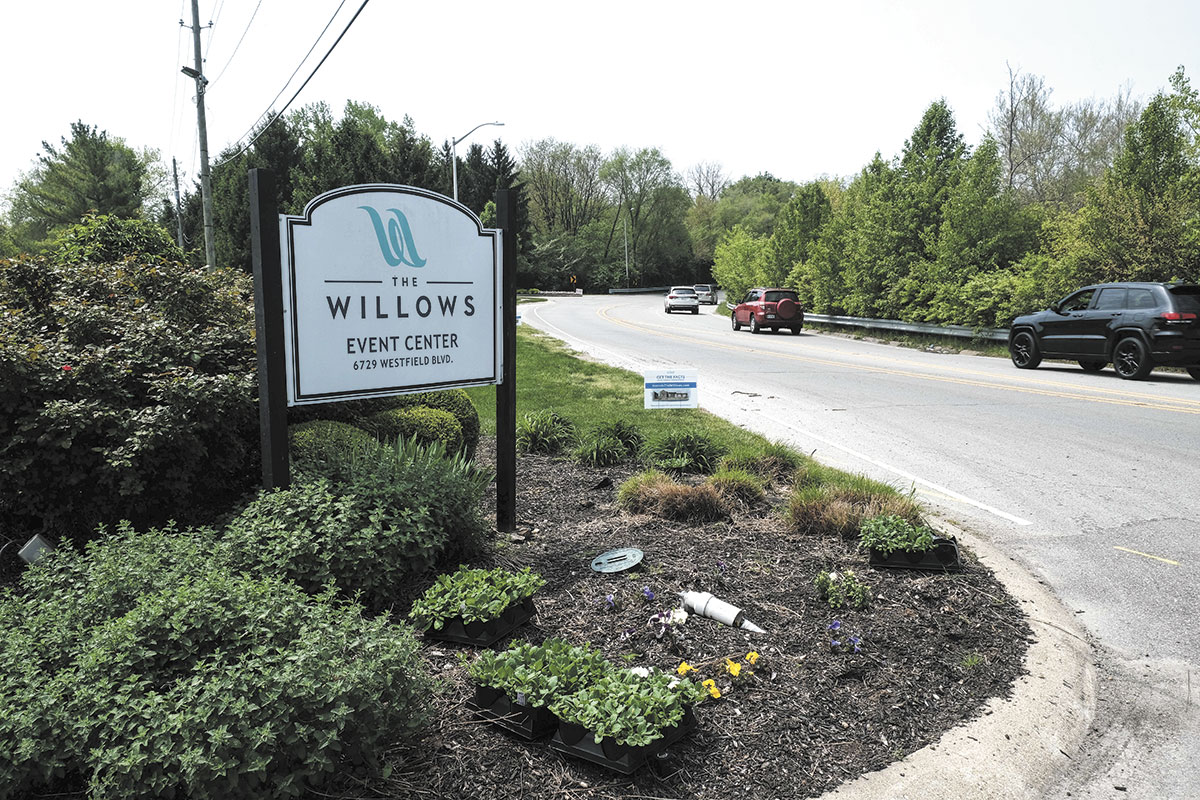
Struggling business
The decision to redevelop The Willows came in late 2021, after the Bayt family determined the property could not withstand continued losses. The Willows has been around since 1988, when it opened as Crystal Yacht Club and was initially opposed by the Nora Northside Community Council, Bayt said.
But the facility has hemorrhaged money for years due to a decline in events that began in the mid-2010s. The venue will be shuttered at the end of this year—regardless of what happens with the redevelopment effort—because most of its corporate business has dried up, leaving only weddings, which aren’t enough to pay the bills. It is expected to host about 50 events in 2022.
“It’s going to be a burden on us because we’re going to have to pay to keep it up—even though it’s going to be closed—and pay taxes,” Jack Bayt said. “We’ll have to sit down as a family and think about next steps.”
The Bayt family, which also owns Crystal Catering LLC, manages three downtown Indianapolis properties: Crane Bay, Indiana Roof Ballroom and The Heirloom. The company also received $4.7 million in Paycheck Protection Program money at the height of the pandemic.
The Bayts last year selected J.C. Hart and Chase as its developers after conducting a quiet request for proposals for reuse of the property. Most proposals it received included a multifamily component.
If the City-County Council rejects the proposal, the Bayt family would be required to wait one year before refiling a rezoning request. Jack Bayt said he’s prepared for whatever decision the MDC makes.
“I believe in the process that’s put in place by the city, in terms of the staff vetting this project, and I’ll be respectful of their decision and what they’re going to do. We’ll see where that takes us,” he said. “If we aren’t successful, I would like to know the reasons why … so we can take those into account. Then we’ll regroup and think about it.”•
Correction: A version of this story published in the May 13 issue of IBJ erroneously stated Spirit Lake was built as an amenity for the event center. In fact, it was already on the property, but was incorporated into the center’s offerings when it was built in 1988. The story also incorrectly stated that Winston Island Woods has 73 units. It has 101 condos and one home.
Please enable JavaScript to view this content.

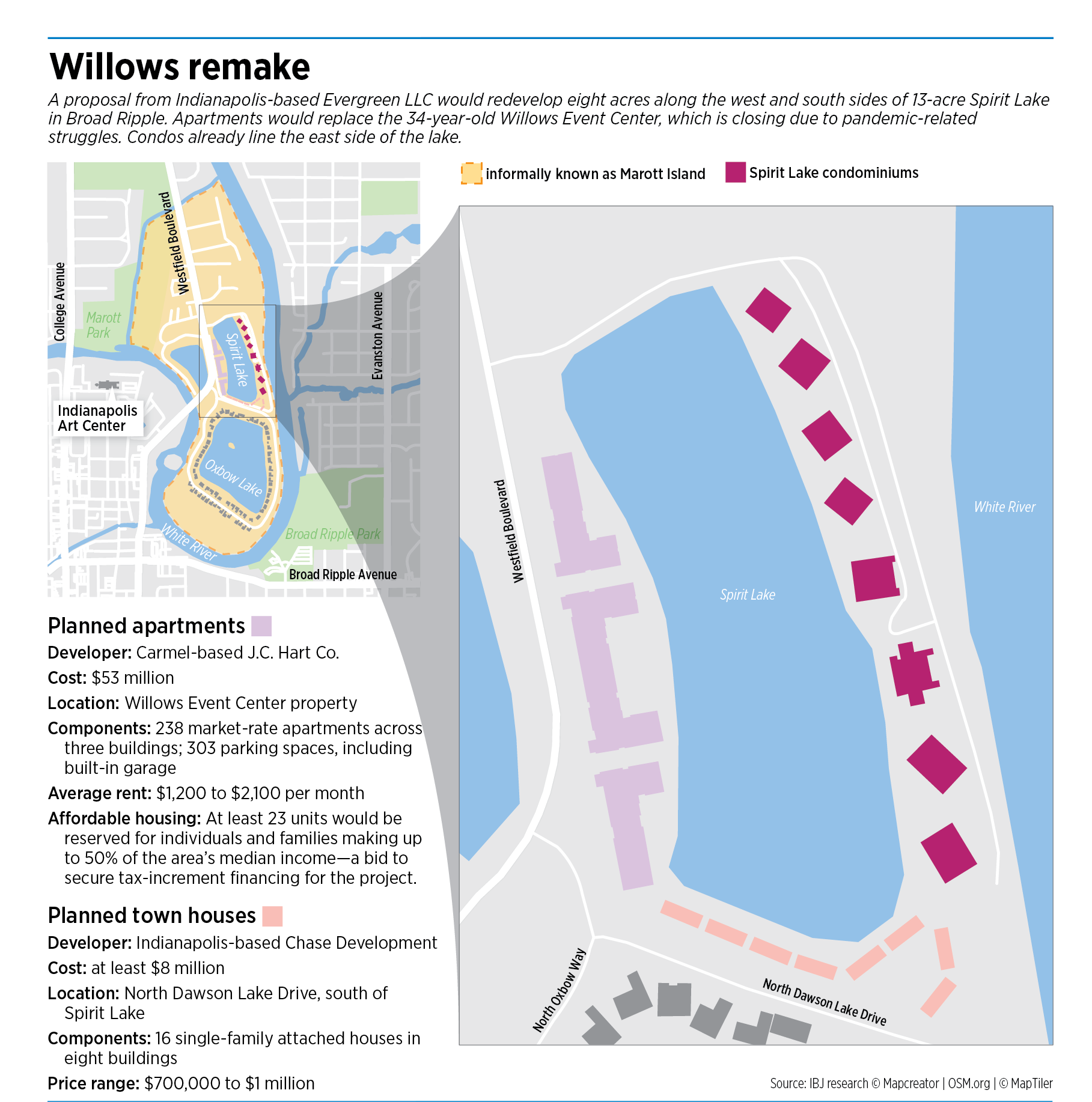

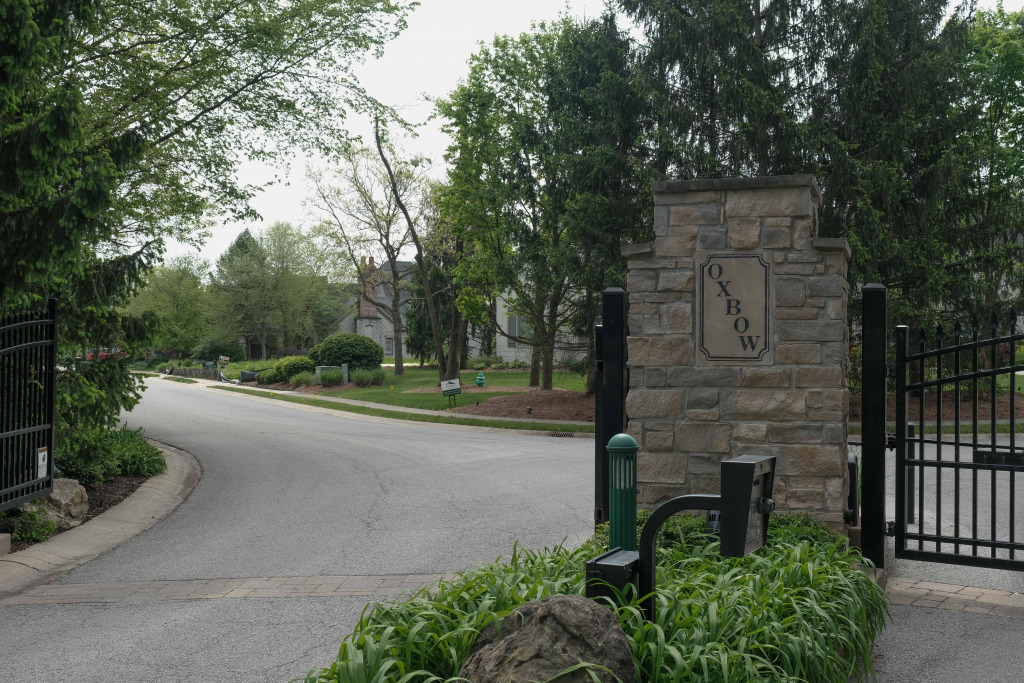
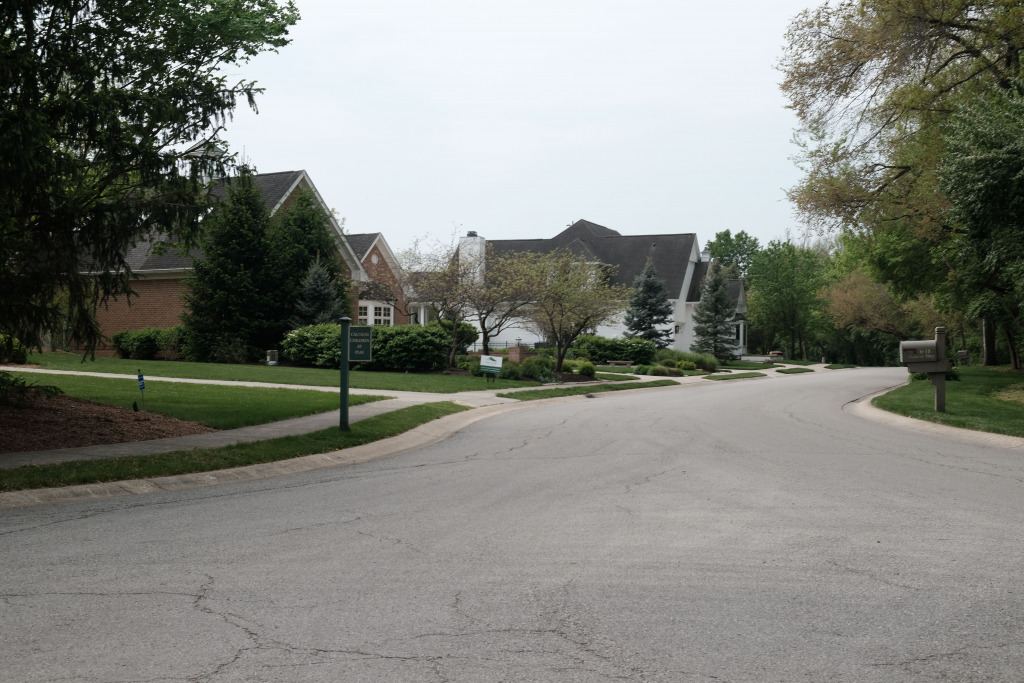
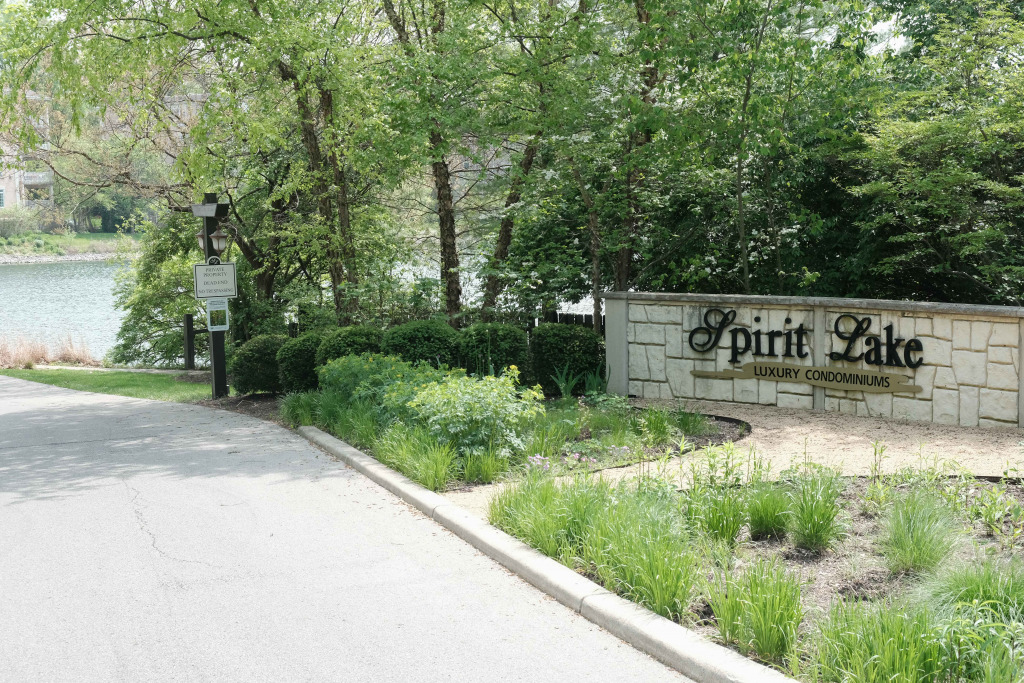
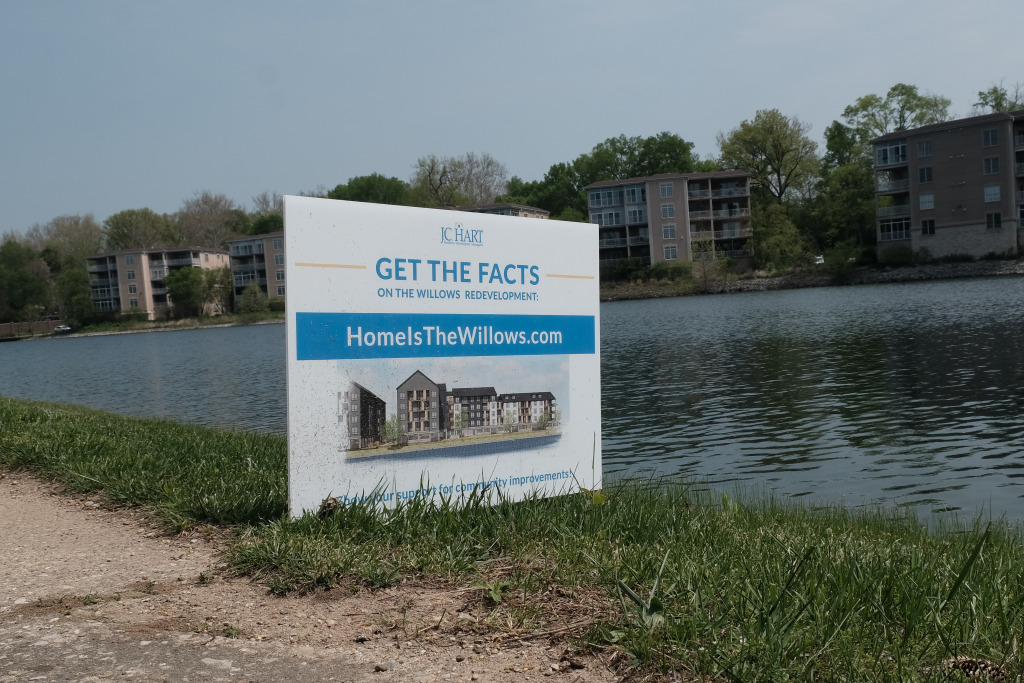
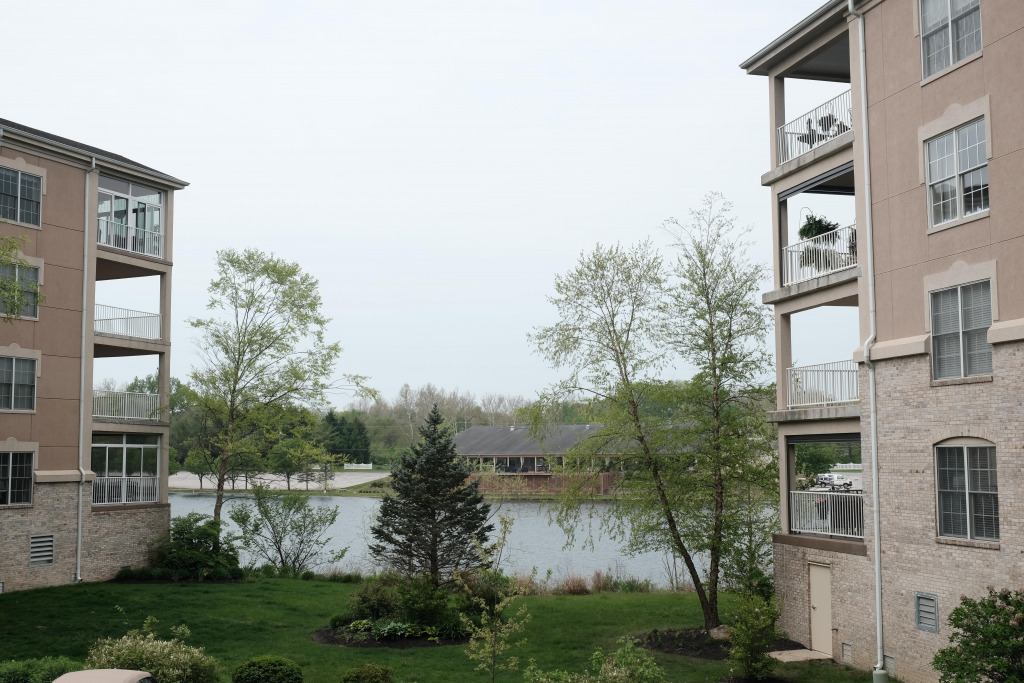
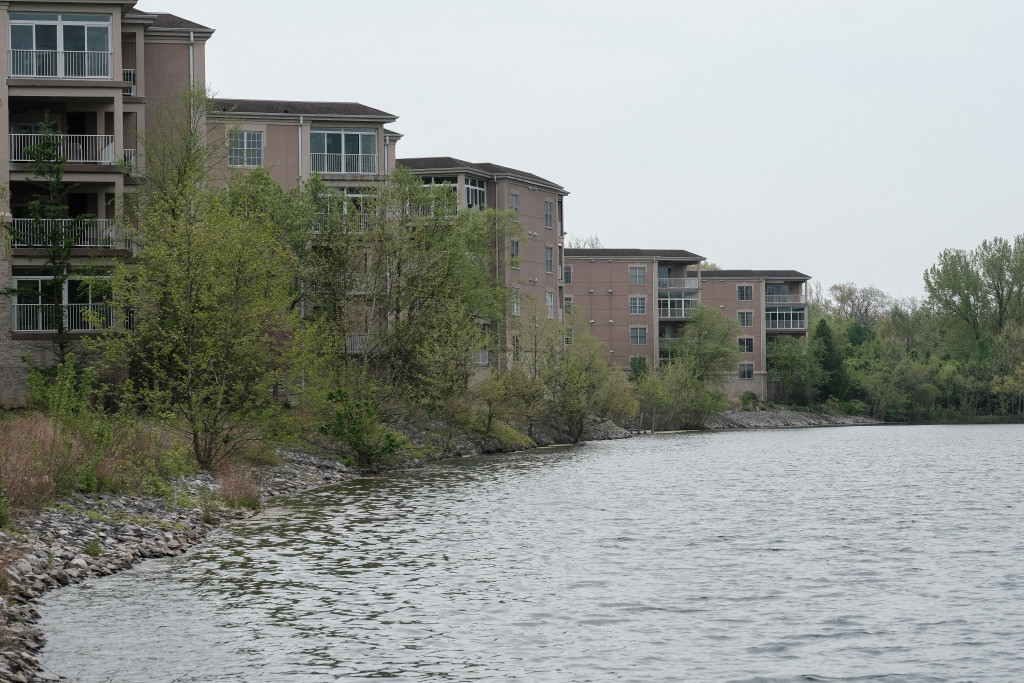
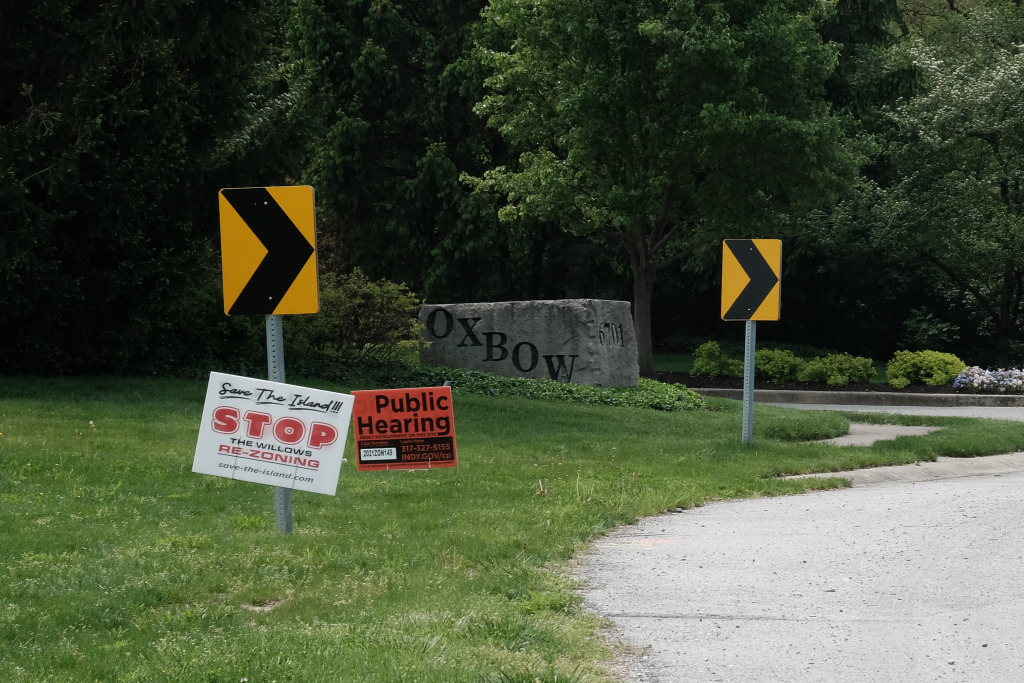
Build it!!!!!
“The development will include new sidewalks and crosswalks along Westfield Boulevard, as well as a connection to the Monon Trail.” Due to the blind curve and the typical speed of cars passing through that area, pedestrians are inevitablely going to be hit. This will be a dangerous area. Don’t do it.
I have to disagree with your logic. If an area is dangerous for pedestrians already, the city should bear the burden to make it *not* dangerous for pedestrians to cross. If that means more crosswalks, traffic signals, re-engineering a curve, or other infrastructure improvements to fix a situation, so be it. In other words, the city has the burden to spend what is necessary to fix it, including raising taxes or reallocating funds, if necessary, and this is independent of whether there is another development in the area or not. Just saying “it’s dangerous, leave the status quo be,” is not only unacceptable, but it leaves the city open currently to liability.
Build it!!!!!!! Whoever don’t agreed,,,move!!!!!!!
What’s wrong with you, Micah?
All of your suggestions and fixes, Chris, lead to increased and significantly slowed traffic, which is the primary issue with the development. There are places where developments like these just do not belong. This is one of those places. Are you even at all familiar with this specific location? No room for sidewalks or expanded lanes to temper traffic. Or are you pushing for this because you are affiliated with the developers? Anyone remotely familiar with this spot would not be advocating for this development.
Michah is just…your guess is as good as mine.
Actually Michah…I admire and actually share your passion for development. I, too, want to see Indy grow, especially with more towers downtown. But this is NOT a good development, for many many reasons.
Michael, if a road cannot be used safely, then it should not be used at all. Slowed traffic is a benefit, not an unfortunate side-effect. The era of allowing an ever growing volume of cars to whiz by without concern about pedestrian safety, quiet surroundings, or clean air is over. We need to build infrastructure for people, not for machines. The area is already developed, and more importantly, in the existing development live people who have a right to safely walk in their neighborhood. To say the status quo of an unsafe road is okay is simply ludicrous.
And, where am I pushing anything about the project? I have not said one thing in favor of the project. I said the city needs to fix the road, whether the new project occurs or not. Perhaps, the better question to ask is do YOU really care about a dangerous road and pedestrian safety, or are you just feigning concern because you hope to block a development that will inconvenience you and so you are throwing out every objection to see what sticks? I suspect I know the answer…
Agreed Christopher B. Saying it’s too dangerous for pedestrians here, so let’s not improve it just doesn’t make sense.
Christopher, your comments about making safety improvements are correct “as is”. Saying the safety improvements are necessary does not, ipso facto, mean the project should be approved.
Christpher: “And, where am I pushing anything about the project? I have not said one thing in favor of the project.”
Seriously? Your disingenuousness is not only showing…but GLARING.
And if the market is really supportive of a development like this, why do they need TIF funds?
Because the city has a long history of subsidizing real estate developments and other private businesses that would have occurred even without subsidies, and so of course, every developer is going to request TIF funds. That speaks more to the city policy of handing out subsidies, not whether there is or is not market demand—ultimately that is a risk the developer should bear.
And the owners are completely disingenuous. They are not selling the spot to a developer. They are planning a long-term lease to keep the property and collect rent for years to come. Don’t buy their pity-party story. Glad they are losing sleep over it. Shows they may have a BIT of a conscience.
At the end of the day, its the right of the owners to do as they please with their property and spend THEIR money as they please. If the DMD grants the approval or rezoning, then its clearly a business decision on the part of people with BIG pockets to develop these sorts of projects. BR is a cool artsy neighborhood that’s growing. Lost of young college students, young professionals and younger families are moving in, so the dynamics and younger generation is moving in. To be honest, most younger people love new and exciting development. Im certain that most who are complaining and using the same old talking points are of an older generation, that haven’t realized times are changing and growth is inevitable.
Build it!!! Then start on the next 200 projects!!!!!
Kevin, it’s not anyone’s right to develop as they please. That’s why there are zoning rules.
Love Kevin’s “youthful wisdom”. Reminds me of Mark Twain who said “When I was a boy of 14, my father was so ignorant I could hardly stand to have the old man around. But when I got to be 21, I was astonished at how much the old man had learned in seven years.” But then again Mark Twain was just an old codger.
Winston Island Woods has 101 condominium units (not 74 as indicated in this article) spread across 16 three-story buildings.
Hi Brent. Thanks for your comment. We have removed the number of Winston Island Woods units from the story for the moment. We have found conflicting information and don’t want to add a new number until we verify. Thank you for bringing this to our attention. -Lesley Weidenbener, editor
There are people who complain about traffic and demand a study is done. Then, the traffic study is done — twice actually. After examining counts at 7 or 8 nearby intersections, the study renders an outcome of little to no effect on area traffic. It is then further noted by DPW there have only been two accidents on that “dangerous road” in the last few years. DPW cites Westfield Boulevard as a non-congested and safe thoroughfare. — Despite all of the time, money, and effort from experts, there are people — who know nothing on the subject — that don’t like the result and say “I don’t believe it”.
Not a realistic approach.
Daniel, does it make any sense that adding 250 units with perhaps 350-500 residents would result in little to no effect on area traffic. I’ll let you in on a little secret. You can buy a study from certain companies with whatever result you wish to have. Or, you pay for 3-5 studies and toss the ones you don’t like.
Randy, does it really seem like a development with 303 parking spaces will have a significant impact on traffic? You seem to be assuming everyone comes and goes from an apartment building at the same exact time.
Great point Wesley. But you tell me…when most of those people are coming and going at the same time…say, morning and evening rush hour…that there won’t be more gridlock? Oh, okay.
Hi Michael, you’re wrong. I’ve lived in a 300+ unit building with the garage entrance on a 2 lane street and never experienced backups in or out of the garage. I’m guessing you’ve only ever lived in single family suburbia, but not everyone leaves their buildings at the exact same time. You’re also forgetting that many residents may walk to work or take the red line. This is an urban part of Indianapolis, not Noblesville.
The firm performing the 3rd party study has a license to uphold. The city concurs with the findings. Plus, even if the studies are wrong this is Indianapolis, a city with over 1M people. There should be traffic. That is a sign of growth.
Wesley, you said “Randy, does it really seem like a development with 303 parking spaces will have a significant impact on traffic? You seem to be assuming everyone comes and goes from an apartment building at the same exact time.” The # of spots inside the development has zero to do with how much traffic will be on the roads just outside of the development on Westfield. And Michael G makes an obviously valid point that people tend to come and go during rush periods.
Ha! The IBJ should just keep a stock headline at hand that reads “Neighbors Fight Dense Development.” It’s so common it’s almost cliche. Oh … and you could add “white, financially well-to-do neighbors” … or is that just assumed.
Interesting you mention “white, financially well-to-do neighbors”. Zoning laws. have roots in making sure certain neighborhoods stay financially unattainable to keep the “wrong” kind of people out. Cites like Minneapolis MN have basically re-zoned all residential areas of the city to allow high density development. Last week I spoke at a public hearing opposed to a project partly because I thought a higher density development would work better.
It sounds like the developer has worked to make changes. I am impressed that the part of the project that borders the gated community to the south has fairly low density town homes. The multi-story condos across the lake are very much a product of the 80’s and the tower in the park idea with wildly spaced building, but in this case mostly surrounded by parking lots, since you have to own a car to live in Indy.
After reading about this project for the last few weeks, I drove around the site and it seems like a pretty good proposal. Unless something strange happens at rush hour, I can’t imagine two different traffic studies would be wrong.
This seems like a major case of NIMBYism.
Look at how many people live in Oxbow, Spirit Lake and Winston Island. The first two have one entrance and you never see “traffic”. Winston has two entrances. No traffic there either.
Let’s face it. They just don’t want apartments in their neighborhood and they are grasping at excuses.
Ahh. Now some people understand the feelings when highways and development forever uprooted mostly Black communities and their homes, businesses, churches, and schools.
Markets (often with government help) are going to do what they want to do.
Oof, talk about a misguided opinion. The federal government bulldozing through vibrant minority communities is nothing like a bunch of rich NIMBY’s crying because they got theirs and don’t want anyone else to move in.
100 years ago this was farm land and swamp. Then houses were built. Now more are going to be built, and apartments too.
See the quote from Nancy about not believing the results of the traffic study. These people are delusional.
@ Joseph W I’m speaking more about the broader issue of coping with change and loss. I agree, wealthy NIMBYs shed tears over development but usually tears of joy as their property values skyrocket.
Thanks for clarifying, I see what you were going for.
I could be wrong, but I think that, contrary to what the article states, if the MDC denies the rezoning, it is dead and doesn’t advance to the City-County Council.
“Let’s face it. They just don’t want apartments in their neighborhood and they are grasping at excuses.” – Mark L.
This exactly. Just a bunch of millionaires complaining about development in an area prime for development. If they don’t like sell and move to the sticks. Broad Ripple has exploded with growth. No stopping it.
Millionaires?! Wow, I guess I haven’t checked my finances in quite a while! Bahamas, here I come!
If they can squeeze 250 units into that property this just sets precedent for them to drop a thousand or more into the Broad Ripple High School property.
“I’ve had a lot of sleepless nights, I can tell you that,” Bayt told IBJ. “Our business is hospitality—we like to make people happy. So, for us, this is gut-wrenching. Quite honestly, I never dreamed that we would get the pushback [we have] for what we felt was a fantastic product.”
Well then maybe you need to rethink the scope of the project.
“City regulations allow the area of the pond to be taken into consideration when figuring density because it would be considered an amenity to the project.”
That is absurd. “The Willows development team said the project’s density is just under 12 units per acre, though that figure skyrockets to 31 units per acre when the pond is not taken into account.” “Remonstrators have pushed back on the idea of including the pond in a density calculation—both because it skews the numbers and because it was already included in calculations for the Spirit Lake condominiums when they were built in 2002.”
“255 units is twice what the city’s comprehensive plan calls for. They should have expected this kind of pushback.”
“When you do all that math, it comes out that you need this kind of density or similar density in order to get a return on your investment,”
This is irrelevant.
“John Hart, president of J.C. Hart Co., said the firm’s efforts to appease neighbors—including a reduction in building height and changes to the building configuration—have generally been ignored.”
Normal tactics in negotiations is to aim well high of what you want and, after rimming back a bit, claim you’ve made a lot of concessions so the neighbors should shut up. It’s not about the scope of the project at the initial stage, but where it’s at now.
The Willows development team commissioned a traffic study on the property that determined the project wouldn’t create adverse effects on Westfield Boulevard
Laughable.
“If awarded incentives, 80% of the real property tax generated by the improvements on the property over a 25-year period would be used to pay off the TIF bonds, while the other 20% of tax dollars would still go to the city.”
This adds insult to injury.
20% of $10 million is still $1.5 million more in taxes the city would collect if it stays an out of business event center. It will be a LOT more if they decide to demolish the event center and leave the land vacant.
Dan, though your math may be correct, TIFs are widely recognized to be poor tools for a city to deploy in support of development. It’s nothing less than an unwarranted subsidy to developers – who are usually well-connected politically and who donate generously to those involved in setting TIF policy. And my math shows if the city’s take at 20% is $10 million, then the developers 80% take is $40 million. Not bad!
A classic: “Nancy Miller, a resident of Spirit Lake, said she is already fearful of the speeds of some vehicles traveling along Westfield Boulevard. “It is not a safe place to park or to drive,” she said of the Willows property. “They say they had a traffic study done,” but if that study didn’t conclude the project should be opposed because of its impact on traffic, “I don’t believe it.””
In other words, “I demand a traffic study while reserving the right to not believe the results.”
Hahahaha right?… I laughed out loud to that statement in the article.
IBJ stop calling Spirit Lake a Pond. That is the developer’s term to minimize the environmental function and importance. It is a LAKE that flows into the White River . The watershed will be degraded by developmental processes and too many people. There are eagles there now, among much other valuable wildlife, that are incompatible with overcrowding.
Build it…glad to see the NIMBYs take it on the chin.
Yes, B-Ryan. NIMBYs BAD, Development GOOD. Thanks so much for your brilliant insight.
I’m not sure how I feel about the project. But, I am sick of public incentives. I struggle to believe that no development would occur there were it not for TIF/public incentives. So, is it necessary or just standard practice of incentives and rewards given to the developer-industrial complex? I don’t know, but I’m very skeptical. Maybe those who stand to make a significant amount of money off of this should instead pay full freight like the rest of us.
Not for this. City should listen to the Residents. Let then Owner sell it for what its Zoning will allow for. Why give them the Benefit at the expense of others
I have lived at 75th & Westfield for 12 years. The only time traffic is an issue on Westfield by The Willows is when an event is letting out. I welcome the addition of sidewalks and crosswalks and increased utilization of the Monon. I welcome the presence of several hundred new neighbors who prefer to live in Marion county over a donut county. I welcome the money they will spend in Broad Ripple and Nora supporting businesses I currently enjoy and new ones that will open because the population is increasing.
If a community is not growing its headcount, that means it is on an economic decline. Everything gets more expensive over time to maintain and new human residents are the most effective way to increase the revenue coming into the area. If developers don’t build here, they will build elsewhere, likely where the environmental impact will be much harsher and where there are fewer engaged neighbors reviewing the proposals and helping developers reach the optimal balance between economic returns and community benefit.
When I wait a little longer at stop lights than I did 10 years ago, I know it’s because there are more people who enjoy living and working here and I feel glad to be in a place that welcomes growth and change.